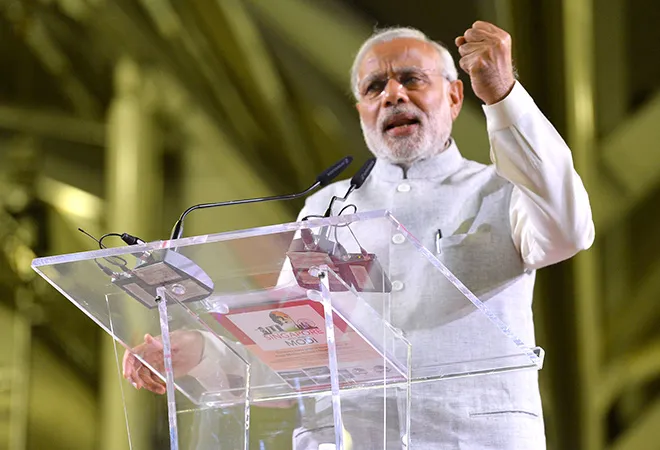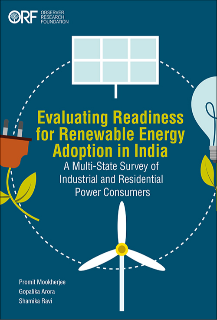
Earlier this week, Prime Minister Narendra Modi addressed the Non-Aligned Movement (NAM) virtual summit for the first time since assuming office in 2014. Calling COVID-19 the “most serious crisis” humanity has faced in decades and underlining the need for NAM to help promote global solidarity, Modi argued that “NAM has often been the world’s moral voice” and in order “to retain this role, NAM must remain inclusive.” Arguing that COVID-19 has shown limitations of the existing international system, he made a case for a new template of globalisation, based on fairness, equality, and humanity as well as international institutions more representative of today’s world in the post post-COVID-19 era. Making a veiled reference to Pakistan, he flagged the issues of “terrorism” and “fake news”, calling them “deadly viruses” at a time when the world is busy fighting coronavirus.
Modi had skipped the two NAM summits during his term so far in 2016 and 2019, making this his first participation in the grouping’s summitry. And this has generated some curious reactions about how Modi might now be recognising the relevance of NAM and its importance for India. This is, however, a serious misreading of why Modi decided to address the virtual NAM summit. NAM’s contemporary irrelevance has nothing to do with Modi’s lack of interest in NAM. The grouping is increasingly irrelevant because the world has changed dramatically from the time it was conceived. Modi may have ideological reasons for shunning previous NAM summits but if we know anything about him, it is that his natural inclination is towards pragmatism when it comes to foreign policy.
Ever since the coronavirus pandemic started revealing its true scale and scope, Modi has tried to position India carefully as a nation that can speak of global concerns with the widest possible range of stakeholders. And the first platform he used was SAARC, a grouping which he has tried to marginalise over the last six years. Just because he used the SAARC platform to reach out to India’s neighbours doesn’t mean that he or his government has had change of heart with regard to the utility or lack thereof of the regional grouping.
At a time of grave worldwide crisis, Modi has effectively used all the instruments and platforms available to India to make a case that instead of nations becoming more and more inward looking, global engagement should be the norm. This is also an attempt to fill the leadership vacuum in the global order when both China and the US have exposed their vulnerabilities. India has shown that a nation with limited capabilities can also emerge as a leader by outlining the concerns of like-minded countries and working with them to build capacities in smaller states.
Indian diplomacy during the time of COVID-19 pandemic has been pro-active and has tried to shape the global discourse. Towards this, existing platforms like NAM and SAARC has been used by Modi in the same way in which he has used newer groupings like the G20. In his address at the NAM summit, Modi showcased India’s efforts towards global cooperation by underlining the supply of critical drugs and medical devices to 123 countries, including 59 members of NAM. At the regional level, India was the first nation to propose setting up of a $10 million SAARC COVID-19 emergency fund to help combat the pandemic in the region.
It must be disappointing for those who hold an ideological predisposition that a BJP government should have nothing to do with NAM and also for those who believe that Modi has shunned NAM because of his ideological differences with Nehru. But clearly for Modi any and every platform that helps in projecting India’s leadership capabilities at a time of a dire global crisis is to be used pragmatically.
This doesn’t mean that non-alignment is back as many ideologues in India desperately want. In fact, for a nation like India this is an infantile debate to have. Given India’s current security predicament, India cannot afford to be non-aligned in the traditional sense of the term as it will have to build partnerships with like-minded countries to build its capacities. India’s security rationale and its leadership ability means that India will always need its own voice to project itself on the global stage. And despite India’s growing engagement with the US, New Delhi has shown that it is quite capable of standing up to Washington where its core interests are concerned.
There was a time for non-alignment. New Delhi has been there and done that. Today’s India and its aspirations demand much more from its leadership. In his own way, Modi is responding to that challenge. Don’t be taken in by his recent address to the NAM summit. He has buried NAM for good. International institutions rarely disappear. NAM will also continue with its mothballed existence. Modi has nothing to lose by using it instrumentally if it serves India’s immediate needs. But to construe this as Modi’s embrace of a now redundant philosophy of global engagement would be a big fallacy.
The views expressed above belong to the author(s). ORF research and analyses now available on Telegram! Click here to access our curated content — blogs, longforms and interviews.




 PREV
PREV


